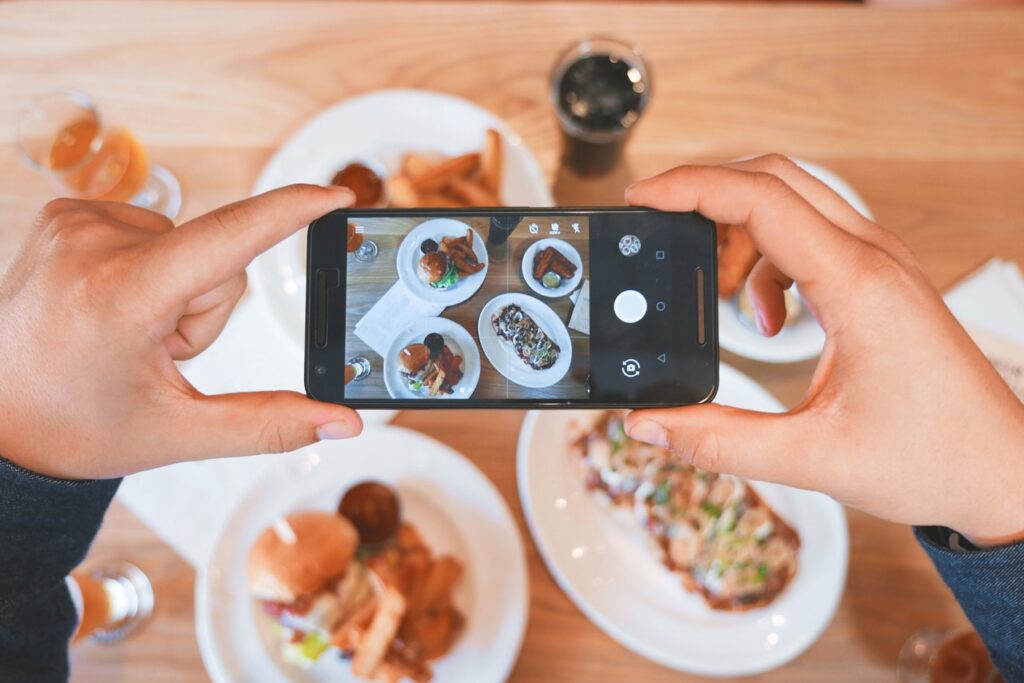We hear more than that. Whether in furniture, tourism or food, if your product is Instagrammable, then there is a good chance that your customers will talk about you on the Internet.
However, a thought came to me on this subject. In this frantic race for Instagrammability, are we not standardizing catering, and prioritize presentation over taste?
Definition: what is Instagrammability?
We could define the concept of instagrammability by the propensity of your product to be photographed and posted on social networks, and in particular Instagram, which gives pride of place to visuals. The influence of Instagram has become such that today, brands are investing heavily – and rightly so – in communication on Instagram.
Indeed, the application with more than 1 billion users around the world has become the “in” place where millennials plan their next vacation, their next high-tech purchase, their latest fashionable diet, and much more. sure their latest trendy restaurant.
Example of Instagramming a brand
At Libshop, the Lebanese “fast-good” brand for which I work, we focused on clean, contemporary tableware and personalized packaging. with our partner PKG Food :





As a result, almost one customer in five takes a photo of their dish, before snapping it, storyifying it or Instagramming it, and the figure increases when they are tourists, or during dinner.
Within a brand like Libshop which is more likened to snacking (and it is) than to a classic restaurant, Instagram is a real asset, because the application makes it possible to enhance street food cuisine which can unfortunately suffer from a lack of image because of its "sandwich" formats and its "fast" orientation, even though the recipes are made from products delicious, healthy and high-quality (beef flank steak, chicken breast, legumes, etc.) which require real expert work in terms of preparation and which have undeniable advantages in terms of health and diet.

If, however, Instagram can help a brand communicate, on a “macro” scale, isn’t its misuse counterproductive for both restaurants and consumers?
Instagram serving culinary superficiality?
The idea jumped out at me when a customer wanted to order a bowl – this new, very fashionable format in the food world – which was available at Libshop in two formats. One was colorful, summery and made with fairly simple products, for an effective result. The other was its winter counterpart, and its preparation required three times more work, with finer ingredients, for an extremely daring result. The customer who was served the winter version returned the dish without even tasting it.
Over time, we noticed that the boldest and most accomplished version was absolutely never chosen when we presented the menu with photos.
This observation thus joins a study, conducted by Expedia on the travel habits of 18-34 year olds. Two-thirds of those surveyed said they were most concerned about whether the location would allow them to add successful photographs to their Instagram feed, and that this criterion is much more important than the cultural perspectives of the city, the festivities offered or the price of alcohol.
The study proved that men were even more concerned than women about being able to achieve beautiful Instagram photos. The objective, still according to this study? Arouse envy and jealousy among colleagues and loved ones. Hence the famous blues that can be caused by social networks.
Without wishing to set myself up as a defender of “good taste” – I myself am a layman in many kitchens – I nevertheless allow myself to question the relevance of the visual on the quality of a product, which can sometimes be to the detriment of taste.
Instagram, both a driving force and a danger for restaurateurs
What should we conclude from all this? In my opinion, social networks must obviously be part of your communication strategy. And it goes without saying that a dish must seduce by smell, look and taste. But be careful, if you try to disguise your dishes too much, you forget what's on the plate. As a result, attracting the Internet user with a pretty photo is one thing, retaining them with a promising product is another.. These two goals are two sides of the same coin, and one without the other won't get you very far.
https://www.instagram.com/p/BC_Eti1wLVW/
Let's take an example that works well. Poké bowls, this new food trend with Hawaiian flair, constitute the perfect synthesis between Instagrammability on the one hand, and addiction on the other. Indeed, poké are extremely effective in terms of image, and they provide customer satisfaction thanks to their practical format and their nutritional benefits felt through the diversity of the ingredients that make them up.
If we add to this that in most cases the ingredients of poké as they are prepared almost everywhere do not require any cooking or production skills upstream, we can conclude that it is a killer-product because it is a win-win format: it constitutes a dish appreciated by consumers and it ensures a margin for restaurateurs. No wonder then that large sushi chains have created poké sub-brands to gain share in this very competitive market in France, and already saturated in the United States.
However, other visually very successful recipes are sometimes disappointing on a culinary level, despite their photogenicity. And by racing for Instagrammability, the trap consists of being less careful about the taste appeal of recipes. Not to mention the proliferation of concepts with trendy and increasingly sophisticated decor for street food, to the point of forgetting that the very essence of street food consists of making quality food that can be eaten on the go, not to transform into an art gallery or an interior designer. As a result, we can very well see our dishes or the decoration of our restaurant taking over social networks, but that does not mean that customers will come back!
Symmetrically, certain grandmother's recipes that we hated when we were little because they were unappetizing to the eye, we miss a lot now that we are adults.
What if the next trend was ugly but nutritious, authentic dishes requiring a certain amount of preparation prowess?





